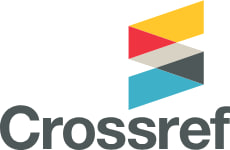تأثير القيادة الريادية في الأداء الابتكاري دراسة ميدانية في عدد من الكليات الاهلية في محافظات الفرات الاوســط / العراق
الكلمات المفتاحية:
القيادة الريادية، الأداء الابتكاريالملخص
يهدف البحث الحالي الى معرفة تأثير القيادة الريادية المتمثلة بـأبعادها(صياغة السيناريو ، وتحشيد التابعين( التي تتمتع بها القيادة الادارية في الكليات الاهلية على الاداء الابتكاري ، ولأجل تحقيق هدف البحث تم اختيار الكليات الاهلية في محافظات الفرات الاوسط ) النجف الاشرف ، كربلاء المقدسة ، الديوانية ، بابل. ( واعتمد البحث الاستبانة كأداة لجمع البيانات الضرورية لانجاز هذا البحث وتحقيق الاهداف التي يسعى اليها. إذ تم توزيع (265) استمارة استبانة على التدريسين في الكليات الاهلية ، وتم الحصول على (128) استمارة صالحة للتحليل. واستخدم البحث عدد من الاساليب الاحصائيىة على سبيل المثال الوسط الحسابي ، والانحراف المعياري ، ومعامل الارتباط الخطي البسيط سبيرمان ، ومعادلة الانحدار الخطي البسيط والمتعدد . وأظهرت النتائج وجود علاقة ارتباط ذات دلالة معنوية موجبة بين القيادة الريادية والاداء الابتكاري. ووجود علاقة تأثير ايجابية ذات دلالة معنوية ايجابية بين القيادة الريادية والاداء الابتكاري.
المراجع
المصادر والمراجع
• Al-Araimi, M.F., Saleh, (2012). “The Relationship between the Full Range of Leadership Styles and Employees’ Creative Performance in Civil Service Organizations: A Field Study of Omani Civil Service Managers, thesis- degree of Doctor in Development Policy and Management, University of Manchester.
• AL-Khalifah, Bashayer (2014). “Entrepreneurial leadership in Kuwaiti Privates Firms” thesis - Doctor of business management, University Of Sterling
• Amabile, T. M., Schatzel, E. A., Moneta, G. B., and Kramer, S. J. (2004)." Leader behaviours and the work environment for creativity: Perceived leader support". The Leadership Quarterly, 15(1): 5-32
• Bagheri, A., & Pihie, Z. A. L. (2009). “An Exploratory Study of Entrepreneurial Leadership Development of University Students “European Journal of Social Sciences – Volume 11, Number 1.
• Bagheri, A., & Pihie, Z. A. L. (2013). " Entrepreneurial leadership competencies among Malaysian university student entrepreneurial leaders “Asia Pacific Jou-rnal of Education • December 2013
• Chen, M. H. (2007). “ Entrepreneurial leadership and new ventures: Creativity in entrepreneurial teams”. Creativity and Innovation Management, 16 (3), 239-249. doi: 10.1111/j.1467-8691.2007.00439.x
• Cohen, A. R. (2004). " Building a company of leaders. Leader to Leader ", 2004(34),20.
• Covin, J. G. and Slevin, D. P. (1988) ‘The influence of organization structure on the utility of an entrepreneurial top management style’, Journal of Management Studies, 25 (3), 217-259.
• Crute, C. D. (2010).” Understanding how community college leaders identify with and relate to entrepreneurial leadership” (Doctoral dissertation). ProQuest Dissertations and Theses (UMI number: 3420126)
• Currie,G,Humphreys,M., Ucbasaran,D. & McManus, S. (2008).“ Entrepreneurial Leadership in the English Public Sector: Paradox or Possibility?” Public Administration, 86, 4, 987–1008.
• Drucker, P. F. (1986). " Innovation and Entrepreneurship: Practice and Princi-ples ". London: Pan Books Ltd.
• Egan, T. M. (2005). "Factors influencing individual creativity in the workplace: An examination of quantitative empirical research". Advances in Developing Human Resources, 7(2): 160- 181.
• Fernald, Jr., L. W., Solomon, G. T. and Tarabishy, A. (2005) ‘A new paradigm: Entrepreneurial leadership’, Southern Business Review, 30(2), 1-10.
• Greenberg,D.,McKone-Sweet and Wilson,H.J.(2011). "The New Entrepreneurial Leader: Developing Leaders Who Shape Social and Economic Opportunity". San Francisco, Cal. : Barrett Koehler.
• Gupta, V., MacMillan, I. C., & Surie, G. (2004).” Entrepreneurial leadership: Developing and measuring a cross-cultural construct”, Journal of Business Venturing, 19(2),241–260.
• He, Ling., (2014). “The Perceived personal characteristics of entrepreneurial leader” Thesis - Master , School of Business Faculty of Business Law Edith Cowan University.
• Hunt, J. G., & Dodge, G. E. (2000). “Leadership déjà vu all over again”. The Leadership Quarterly, 11(4), 435-458.
• Hunt-Qxendia, C., (2010). Entrepreneurial leade ship: A quantitative study of the Motivation and sustainable business strategies of American Indian entrepreneurs in North Carolina. Doctoral dissertation. Michigan: ProQuest LLC
• Ireland, R. D., & Hitt, M. A. (1999). “ Achieving and maintaining strategic comp-etitiveness in the 21st century: The role of strategic leadership “. Academy of Management Executive,13,43-57
• Ireland, R. D., Covin, J. G. and Kuratko, D. F. (2007). “ A Model of Corporate Entrepreneurship Strategy’, Best Papers: Special Conference on Strategic Entr-epreneurship”, Max Planck Institute, Germany.
• Jaskyte, K., and Kisieliene, A. 2006. Determinants of employee creativity: A survey of lithuanian nonprofit organizations. Voluntas: International Journal of Voluntary and Nonprofit Organizations, 17(2): 128-136.
• Jung, D. I. 2001." Transformational and transactional leadership and their effects on creativity in groups". Creativity Research Journal, 13(2): 185-195.
• Kim, J. 2001. “ A study of relationships among work motivation, problem-solving style, leadership style, and team climate on creative behaviour in the south Korean workplace “. (Unpublished doctoral dissertation). University of Missouri, Columbia.
• Koivuniemi, Reetta., (2016). " What it takes to become an entrepreneurial leader?" Thesis- Master - Aalto University.
• Kuratko, D. F. and Hodgetts, R. M. (2007). "Entrepreneurship: Theory, Process, Practice", OH: Thomson/ South Western Publishing
• Kuzmenko, T., (2009). " The Effects Of Transformational And Transactional Leadership On Individual Creative Performance: Role Of Follower's Motivation, Identity And Self-Esteem " Thesis, Degree Doctor ofPhilosophy, McMaster University.
• Luthans F., & Doh, P. Jonathan, (2012). "International Management: Culture, Strategy, and Behavior" , 8 Edi, Published by McGraw-Hill.
• McGrath, R. G., & MacMillan, I. C. (2000). "The Entrepreneurial Mindset: Strategies for Continuously Creating Opportunity in an Age of Uncertainty": Boston, Mass. ; [Great Britain] : Harvard Business School Press.
• McKone-Sweet, Greenberg, D. and Wilson, H. J. (2011) “A Giving Voice To Values Approach to Educating Entrepreneurial Leaders”, Journal of Business Ethics Education, 8 ,337-342
• Mumford, M. D., Scott, G. M., Gaddis, B., and Strange, J. M. 2002. Leading creative people: Orchestrating expertise and relationships. The Leadership Quarterly, 13(6): 705-750.
• Oke, A., Munshi, N., and Walumbwa, F. O. 2009. “The Influence of leadership on innovation processes and activities. Organizational Dynamics”, 38(1): 64-72.
• Oldham, G. R., and Cummings, A. 1996."Employee creativity: Personal and contextual factors at work". The Academy of Management Journal,39(3): 607-634.
• Pallant, J. (2011). "SPSS Survival Manual". 4th ed., open university press, McGraw-Hill education.
• Parks, S. (2006). "How to Be an Entrepreneur". Hounslow, Essex: Pearson Education Limited.
• Perren, L. (2002). “Comparing entrepreneurship and leadership”: A textual analysis The Council for Excellence in Management and Leadership Retrieved from 6http://www.managementandleadershipcouncil.org/downloads/r6.pdf
• Pieterse, A. N., Knippenberg, D., Schippers, M., and Stam, D. 2010. “Transformational and transactional leadership and innovative behaviour: The moderating role of psychological empowerment”. Journal of Organizational Behaviour, 31(4): 609-623
• Politis, J. D. 2004. “Transformational and transactional leadership predictors of the ‘stimulant’ determinants to creativity in Organizational work environments. The Electronic Journal of Knowledge Management, 2(2): 23-34.
• Prabhu, G.N. (1999). "Social entrepreneurial leadership". Career Developm-ent International, 4, 140-146.
• Redmond, M. R., Mumford, M. D., and Teach, R. (1993). "Putting creativity to work: Effects of leader behaviour on subordinate creativity". Organizational Behaviour and Human Decision Processes, 55(1): 120-151
• Roomi, M. A., & Harrison, P. (2011). “Entrepreneurial leadership: What is it and how should it be taught?” International Review of Entrepreneurship, 9(3).
• Saunders, M. N., Lewis, P. and Thornhill, A. (2009). "Research methods for business students". 5th ed., Pearson Education Limited.
• Scott, S. G., and Bruce, R. A. 1994. “Determinants of innovative behaviour: A path model of individual innovation in the workplace”. The Academy of Management Journal, 37(3):580-607.
• Shamir, B., House, R. J., and Arthur, M. B. (1993) “The motivational effects of charismatic leadership: A self-concept based theory”, Organisational Science, 4, 577–594.
• Sosik, J. J., Kahai, S. S., and Avolio, B. J. (1998). “Transformational leadership and dimensions of creativity: Motivating idea generation in computer-mediated groups”. Creativity Research Journal, 11(2): 111-121.
• Surie, G. and Ashley, A. (2008). “Integrating pragmatism and ethics in entrepreneurial leadership for sustainable value creation”. Journal of Business Ethics, 81, 235-246.
• Timmons, J. A. (2007), “New Venture Creation: Entrepreneurship for the 21st Century”, 7th ed., McGraw-Hill, Boston, MA.
• Uhl-Bien, Mary, Schermerhorn, R., John & Osborn ,Richard N., (2014). "Organizational Behavior" 13th Edition , John Wiley & Sons, Inc.
• Vecchio, R. P. (2003). “ Entrepreneurship and leadership: Common trends and common threads”. Human Resource Management Review, 13, 303-327.
• Zaccaro, S. J., Kemp, C., & Bader, P. (2004). “Leader traits and attributes”. In J. Antonakis.
• Zhang, X, Gloor, P & Grippa, F (2013), 'Measuring creative performance of teams through dynamic semantic social network analysis', International Journal Organi-sational Design and Engineering, vol. 4, no. 2, pp. 165-84.
• Zhou, J., & George, J.M. (2001)." Whenjob dissatisfaction leads to creativity organizational creativity". Academy of Management Review, 18 (2), pp.293-321

التنزيلات
منشور
كيفية الاقتباس
إصدار
القسم
الرخصة
الحقوق الفكرية (c) 2024 احسان دهش جلاب ، حميدة غجير جريمخ

هذا العمل مرخص بموجب Creative Commons Attribution-NonCommercial-NoDerivatives 4.0 International License.
يحتفظ المؤلفون بحقوق الطبع والنشر لأوراقهم دون قيود.









